














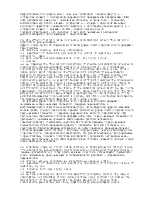

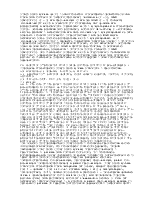
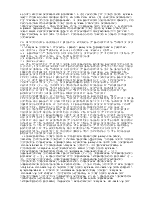












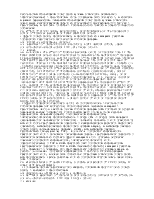
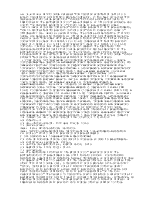




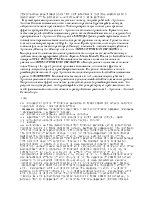


TI: Nitric oxide concentrations are increased in the fetoplacental circulation TI: концентрации Оксида азота увеличены в фетоплацентарном кровообращении in preeclampsia.
AU: Lyall-F; Young-A; Greer-IA
AD: Department of Obstetrics and Gynecology, University of Glasgow, United Kingdom.
SO: Am-J-Obstet-Gynecol. 1995 Sep; 173(3 Pt 1): 714-8
AB: OBJECTIVE: The aim of this study was to measure serum concentrations of total nitrites, as an index of nitric oxide synthesis, in the maternal and fetal circulations of normal pregnancies and in pregnancies complicated by preeclampsia. STUDY DESIGN: We studied 32 women with preeclampsia and 36 with uncomplicated pregnancies. Maternal venous blood samples were collected from all of the patients, and umbilical venous blood was collected from 13 of the preeclamptic group and 17 of the control group. Serum nitric oxide concentrations were determined with the Greiss reaction by measuring combined oxidation products of nitric oxide, serum nitrite and nitrate after reduction with nitrate reductase. RESULTS: There were no significant differences in maternal serum nitrite concentrations between the groups (control group 29.8 +/- 1.07 mumol/L, preeclamptic group 29.5 +/- 1.06 mumol/L). Significantly higher serum nitrite concentrations were found in umbilical venous serum in the preeclamptic group compared with the control group (34.59 +/- 1.12 mumol/L vs 23.90 +/- 1.05 mumol/L, p < 0.01). CONCLUSIONS: Total nitrites are increased in the fetoplacental circulation in preeclampsia. These results support the hypothesis that increased nitric oxide production may be a compensatory response to improve blood flow or may play a role in limiting platelet adhesion and aggregation.
: Цель этого изучения состояла в том, чтобы измерить серологические концентрации полных нитритов, как индекс синтеза оксида азота, в материнских и эмбриональных кровообращениях нормальных беременностей и в беременностях, осложненных преэклампсией. ПРОЕКТ ИЗУЧЕНИЯ: Мы изучили 32 женщин с преэклампсией и 36 с несложными беременностями. Материнские венозные пробы крови были собраны от всего из пациентов, и пупочная венозная кровь была собрана от 13 из preeclamptic группы и 17 из контрольной группы. Концентрации оксида азота сыворотки были определены с Greiss реакцией, измеряя объединенные продукты окисления оксида азота, серологического нитрита и нитрата после сокращения с нитратом reductase. РЕЗУЛЬТАТЫ: не было никаких значительных различий в материнских серологических концентрациях нитрита между группами (контрольная группа 29.8 +/-1.07 mumol/L, preeclamptic группа 29.5 +/-1.06 mumol/L). Значительно более высокие серологические концентрации нитрита были найдены в пупочной венозной сыворотке в preeclamptic группе по сравнению с контрольной группой (34.59 +/-1.12 mumol/L против 23.90 +/-1.05 mumol/L, p < 0.01). ЗАКЛЮЧЕНИЯ: Полные нитриты увеличены в фетоплацентарном кровообращении в преэклампсии. Эти результаты поддерживают гипотезу, которая увеличилась, продукция оксида азота может быть компенсационная реакция, чтобы улучшить кровоток или может играть роль в ограничении спайки тромбоцита и скопления.
TI: Immunohistochemical characterization of placental nitric oxide synthase expression in preeclampsia.
TI: immunohistochemical характеристика плацентарного оксида азота synthase экспрессия в преэклампсии.
AU: Ghabour-MS; Eis-AL; Brockman-DE; Pollock-JS; Myatt-L
AD: Department of Pediatrics, University of Cincinnati College of Medicine, OH 45267-0526, USA.
SO: Am-J-Obstet-Gynecol. 1995 Sep; 173(3 Pt 1): 687-94
AB: OBJECTIVE: Our purpose was to compare the expression of endothelial nitric oxide synthase in the placenta and umbilical cord of preeclamptic placenta with that of the normotensive placenta. STUDY DESIGN: We compared placental endothelial nitric oxide synthase expression in preeclamptic (n = 3) with that in normal (n = 3) pregnancies. Frozen sections of umbilical cords, chorionic plate vessels, and terminal villi were immunostained with a monoclonal endothelial nitric oxide synthase antibody (H32). RESULTS: No difference in endothelial nitric oxide synthase immunostaining in the endothelium of the umbilical cord artery and vein, chorionic plate vessels, and stem villous vessels was found between preeclamptic and normotensive pregnancies. In contrast, in the preeclamptic placentas endothelial nitric oxide synthase immunostaining was seen in the small terminal villous vessels with underlying smooth muscle layer. In the syncytiotrophoblast endothelial nitric oxide synthase immunostaining appeared primarily apical in location and diffuse in distribution in the preeclamptic placentas but primarily basal and punctate in the normotensive placentas. CONCLUSIONS: Differences in endothelial nitric oxide synthase expression in terminal villous vessels and in syncytiotrophoblast may be a result of vascular alterations or damage that take place in the placenta in preeclampsia. These differences may alter the regulation of blood flow in the fetal and maternal placental vasculatures in preeclampsia.
Уважаемый посетитель!
Чтобы распечатать файл, скачайте его (в формате Word).
Ссылка на скачивание - внизу страницы.